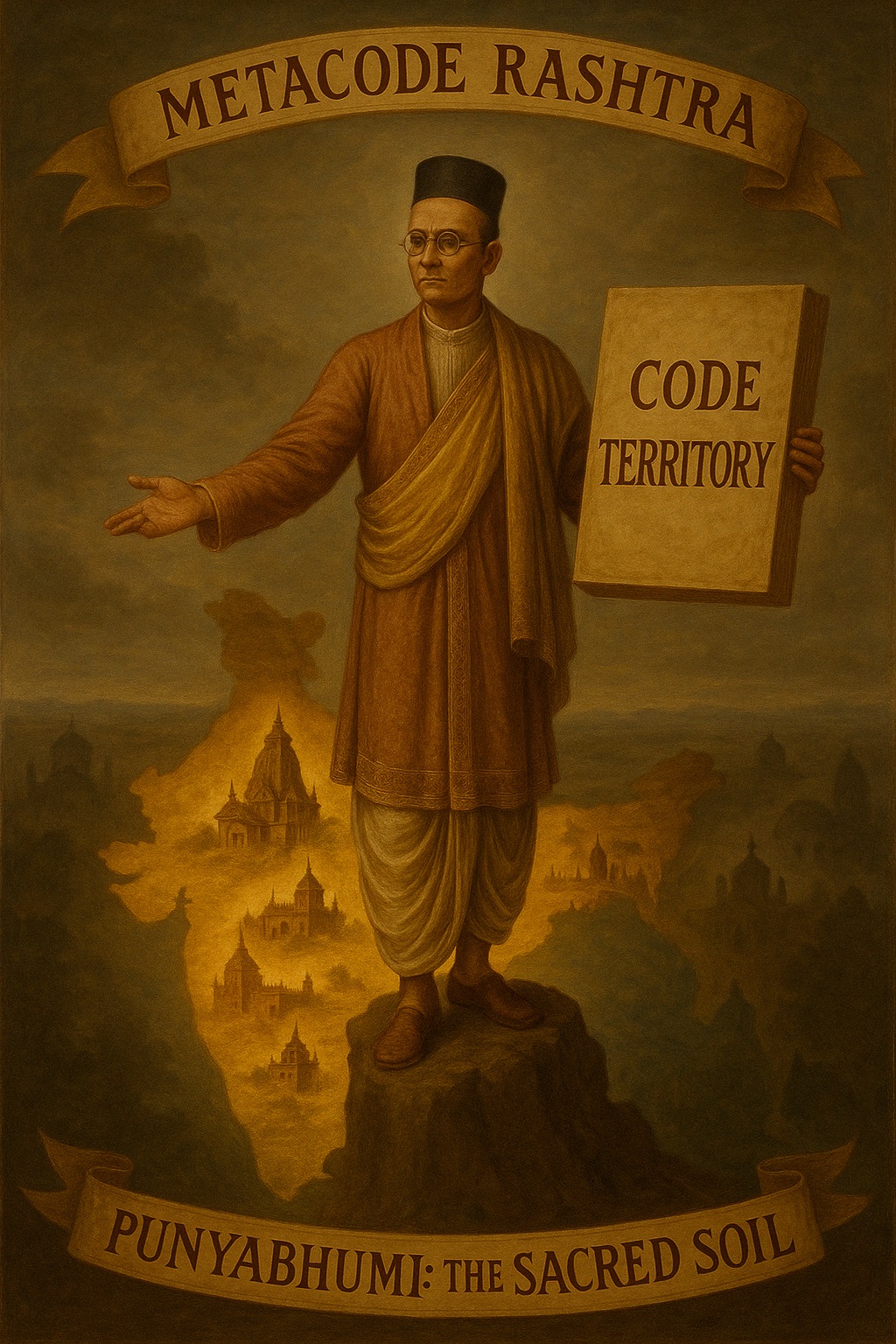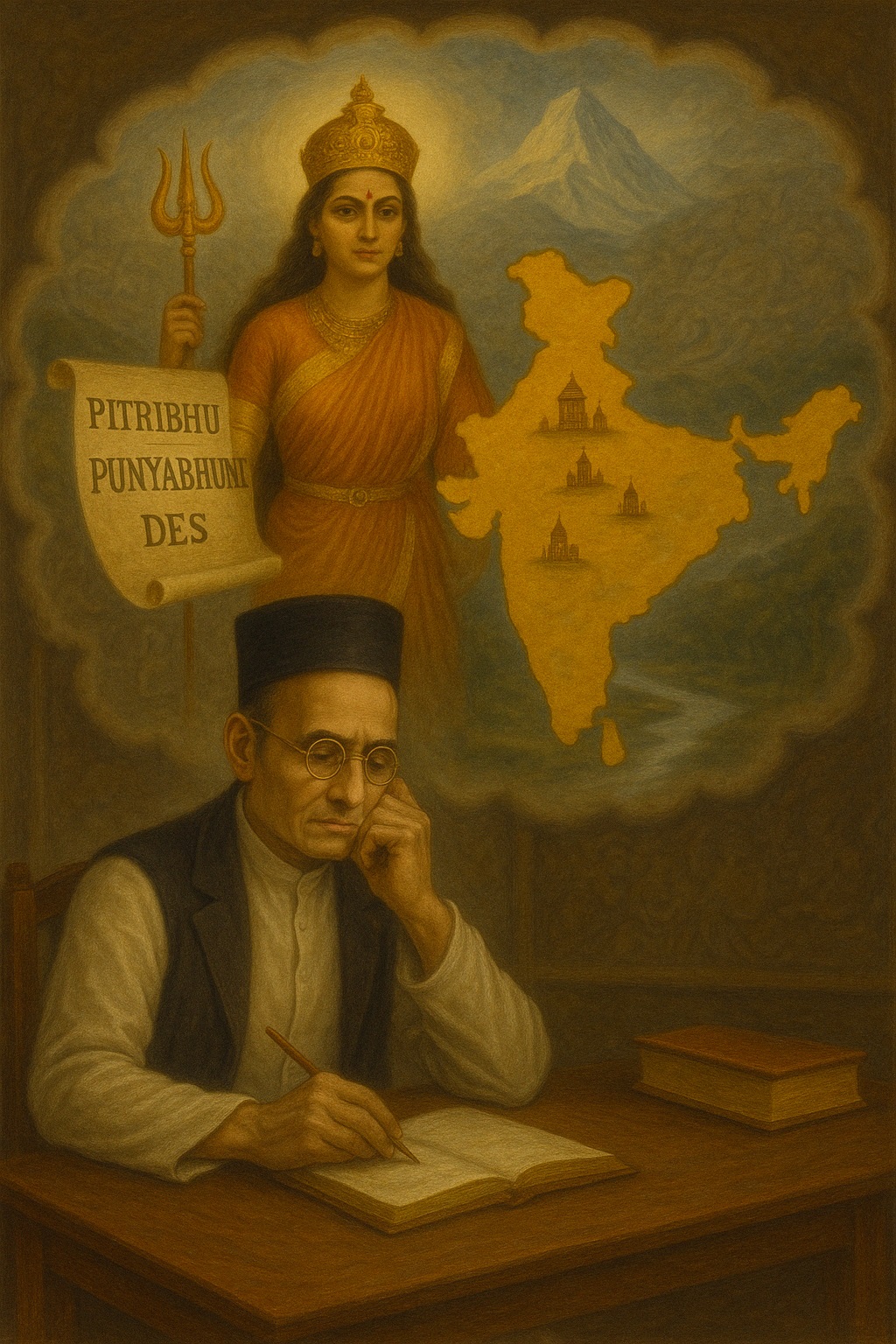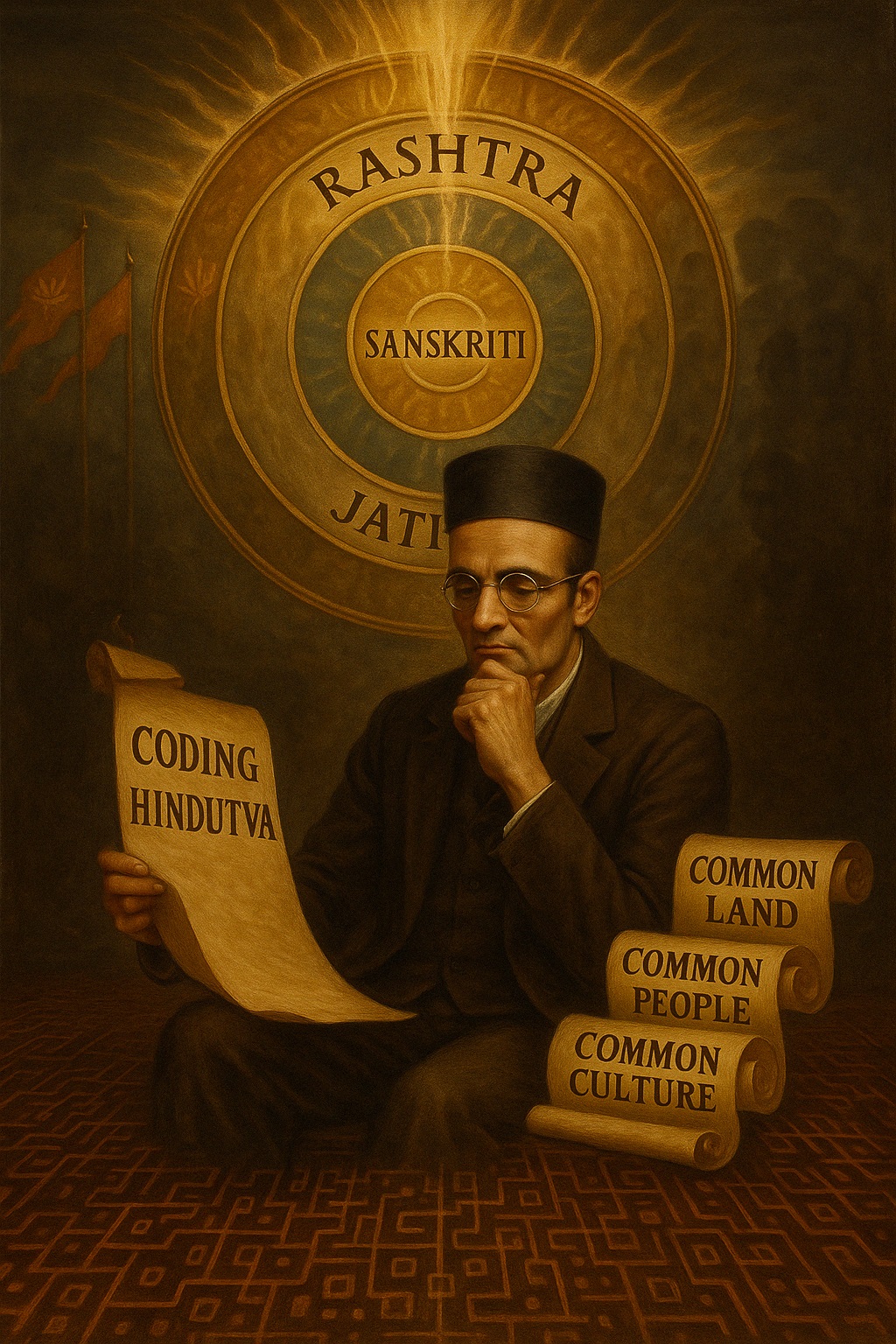Tag: Pitribhu
-
Savarkar’s coding of Hindutva; Metacode Rashtra, Part 4; Code Territory (3/6) The concept of Punyabhumi, or “sacred land”, is central to Vinayak Damodar Savarkar’s definition of the Hindu Rashtra. While he acknowledges the geographical and territorial aspect of the nation (Pitribhu), he further elevates it by embedding a religious dimension, defining it as a “sacred…
-
Savarkar’s Coding of Hindutva, Metacode Rashtra, Part 3; Code Territory (2/6) Vinayak Damodar Savarkar’s ideological framework for Hindutva is deeply rooted in territorial delineation, a concept that is essential for political realism while seemingly contradictory to his broader worldview. His reflections on the nature of the Indian nation and its territorial boundaries stem from a…
-
Savarkar’s Coding of Hindutva; Metacode Rashtra, Part 1 The concept of Hindutva is deeply intertwined with geography, history, and a unique cultural identity. At its core, the idea of Rashtra – the first Metacode – serves as the constitutive element of the “common land.” This Metacode not only defines the territorial framework of Hindutva but…




